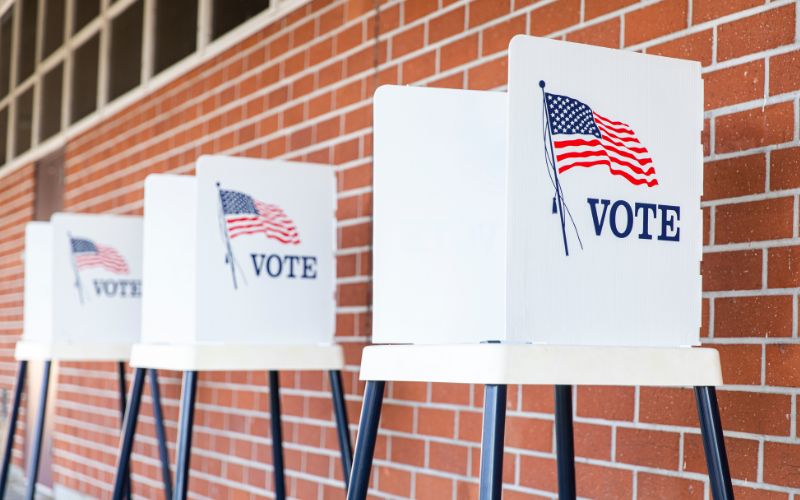
- Details
- By Elyse Wild
Two tribes in Nebraska last week successfully negotiated a court approved redistricting plan with Thurston County to settle a lawsuit in which the tribe's alleged the county intentionally diluted the impact of Native voters.
On January 26, 2024, the U.S. District Court for the District of Nebraska approved a consent decree that requires the Nebraska county to adopt a new district plan to provide Native Americans a fair opportunity to elect candidates to the Thurston County Board of Supervisors. Local elections will use the new map starting in next year's elections and until the next redistricting process begins after 2030.
As a result of historical participation in the 2020 Census, the Native population in the United States grew by an astonishing 86.5%. According to Census Data, in 2021, Thurston County had a population of 6,8000, 60% of which is Native American. The majority of those Native residents are of voting age.
The new map makes it so four of the seven Board of Supervisors districts will provide Native voters with a fair opportunity to elect their preferred candidates, as required by the federal Voting Rights Act (VRA).
This case marks the third time Thurston County has been successfully sued under the VRA for a redistricting plan that violates the rights of Native American voters in the county.
"Native people in Thurston County have thrived against all odds in spite of any setback, and this includes defending Native voters' right to participate in legal and fair elections in Nebraska," Winnebago Tribe of Nebraska Chairwoman Victoria Kitcheyan said in a statement. "We negotiated the new district map with county officials so Native voters will have a fair chance at electing candidates to the Board of Supervisors in 2024."
In 1979, courts subjected Thurston County to a consent decree forbidding the adoption of an at-large voting system as violating Section 2 of the VRA because an at-large system would disenfranchise the estimated 28% population of Native voters in the county at the time.
As a result of another lawsuit, the courts in 1996 required Thurston County to create a legal district map that fairly apportioned the then-estimated 36% population of Native voters per the VRA.
The 2023 consent decree requires Thurston County to create a legal district map that reflects that Native Americans now comprise almost 60% of the county's population and make up a majority of the voting-age population of Thurston County.
During Thurston County's redistricting process after the release of the 2020 Census, the Board of Supervisors refused to implement a VRA-compliant map proposed by both Tribes and instead adopted a map that will now be replaced by a VRA-compliant map as required under the new consent decree.
The court asked the parties to submit briefing on what effect a recent Eighth Circuit opinion had on the court's ability to approve the consent decree. That Eighth Circuit case, Arkansas State Conference NAACP v. Arkansas Board of Apportionment, made the unprecedented ruling that private citizens do not have a right of action under Section 2 of the VRA. However, the judge ultimately found that authority does exist for the Nebraska court to approve the consent decree.
"This case shows that we will keep fighting for our right to vote," said Omaha Tribe Chairman Jason Sheridan. "The new consent decree resolves the third and hopefully last lawsuit against Thurston County to get a legal and equitable redistricting process. The Omaha Tribe is dedicated to fighting any legal battles Thurston County throws at us."
Native American voters continue to historical face disenfranchisement in many states and districts. Polling places located far from remote tribal communities and voter ID laws that prevent citizens living on reservations without traditional street addresses from voting have contributed to Native Americans having the lowest voter turnout of all groups.
Mobilization efforts by Native-led organizations are changing that, however, and Native American voters increascingly play a major role in local and federal elections, according to a new report by the National Urban Indian Family Coalition.
In 2002, South Dakota Senator Tim Johnson (D-SD) was re-elected by 500 votes when the final votes were counted on the Pine Ridge Reservation, according to an investigation by the Native American Rights Fund.
Michigan had one of the closest margins in the 2016 Presidential Election, with a margin of 0.3 percent. With more than 100,000 Native people aged 18 and older in Michigan, the number of Native people eligible to vote was four times more than the margin of victory in the state, according to the investigation.
More Stories Like This
Native News Weekly (August 25, 2024): D.C. BriefsUS Presidents in Their Own Words Concerning American Indians
Indigenous Actor Elaine Miles Reports Detention by Alleged ICE Agents
Happy Thanksgiving from Native News Online
Coming Up on Native Bidaské: Behind the Animation: Joey Clift Talks “Pow” and Native Storytelling
Help us tell the stories that could save Native languages and food traditions
At a critical moment for Indian Country, Native News Online is embarking on our most ambitious reporting project yet: "Cultivating Culture," a three-year investigation into two forces shaping Native community survival—food sovereignty and language revitalization.
The devastating impact of COVID-19 accelerated the loss of Native elders and with them, irreplaceable cultural knowledge. Yet across tribal communities, innovative leaders are fighting back, reclaiming traditional food systems and breathing new life into Native languages. These aren't just cultural preservation efforts—they're powerful pathways to community health, healing, and resilience.
Our dedicated reporting team will spend three years documenting these stories through on-the-ground reporting in 18 tribal communities, producing over 200 in-depth stories, 18 podcast episodes, and multimedia content that amplifies Indigenous voices. We'll show policymakers, funders, and allies how cultural restoration directly impacts physical and mental wellness while celebrating successful models of sovereignty and self-determination.
This isn't corporate media parachuting into Indian Country for a quick story. This is sustained, relationship-based journalism by Native reporters who understand these communities. It's "Warrior Journalism"—fearless reporting that serves the 5.5 million readers who depend on us for news that mainstream media often ignores.
We need your help right now. While we've secured partial funding, we're still $450,000 short of our three-year budget. Our immediate goal is $25,000 this month to keep this critical work moving forward—funding reporter salaries, travel to remote communities, photography, and the deep reporting these stories deserve.
Every dollar directly supports Indigenous journalists telling Indigenous stories. Whether it's $5 or $50, your contribution ensures these vital narratives of resilience, innovation, and hope don't disappear into silence.
 The stakes couldn't be higher. Native languages are being lost at an alarming rate. Food insecurity plagues many tribal communities. But solutions are emerging, and these stories need to be told.
The stakes couldn't be higher. Native languages are being lost at an alarming rate. Food insecurity plagues many tribal communities. But solutions are emerging, and these stories need to be told.
Support independent Native journalism. Fund the stories that matter.
Levi Rickert (Potawatomi), Editor & Publisher

